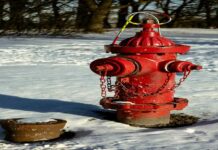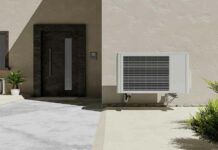Want to save money on roof replacements?
Your roof is the most important thing in your house, yet also the one you tend to get the least done. A typical US roof repair will cost you $985, according to industry statistics, and the average homeowner will spend between $376 and $1,649 for repairs.
But here’s the thing…
A lot of these expensive repairs could have been avoided by regular maintenance. With this full guide, you’ll know exactly how to care for your roof in every season so you don’t have costly repairs down the road.
Inside This Guide:
- Understanding Seasonal Roof Care
- Essential Spring Maintenance Tasks
- Critical Summer Upkeep Tips
- Important Fall Preparations
- Winter Protection Strategies
- Professional Inspection Guidelines
Seasonal Roof Cleaning: What It Does For You!
The roof market is booming – $23.35 billion in 2023 and is expected to grow at a 6.6% CAGR by 2032. Why? Because roofs are replacing and being repaired at a higher rate than ever.
Consider this:
Typical roof replacement now runs between $17,750 and $33,037. The average homeowner ends up paying around $25,000 for an entire replacement. It’s an outsized expenditure that can easily be prevented with regular care.
When you are suffering from roof leaks in Atlanta, then expert Atlanta roof repair services can identify and fix issues before they become major. For issues to be detected early, you need periodic maintenance from trained professionals.
Spring Roof Maintenance: New Year, New Beginning
Spring is a good season to inspect for winter damage and get your roof ready for summer. Because of the cool climate, it’s the perfect time to inspect and maintain it by:
- Clearing all gutters of leaves
- Checking for falling or cracked shingles
- Checking flashing around chimneys and vents
- Checking for winter water damage signs
- Removing moss or algae growth
- Ensuring proper attic ventilation
The trick is to correct problems as soon as you notice them. Even little spring problems can quickly escalate into a major headache in summer if not addressed early.
Summer and Fall Care: Seasons Ahead Ready for Seasons to Come
Summer is hard with high temperatures and storms, while fall is roofing season. According to the data provided by the industry, the slow season starts in November through March because of the weather.
Do these regular maintenance chores:
- Check for warped or curling shingles caused by excessive heat.
- Insulate your attic properly to eliminate condensation.
- Clear storm debris promptly.
- Full gutter cleaning before the leaves fall.
- Check seals and flashings.
- Patch damaged or missing shingles.
Winter Protection Strategies
Winters are rough on your roof.
Key winter maintenance points:
- Remove snow accumulation safely.
- Look for ice dams.
- Track attic temperature and ventilation.
- Check for water damage.
- Clear icicles promptly.
- Maintain proper insulation.
Professional Inspection Guidelines
DIY maintenance is vital, but inspections from an expert are key. Roofing is a massive field with over 212,000 workers for a reason – it takes experts to take care of the roof.
When to schedule professional inspections:
- After severe storms
- Bi-annual maintenance checks
- Before buying/selling a home
- When interior leaks appear
- Every 3-5 years minimum
- If your roof is older than 15 years old
Common Warning Signs
Want to know what to look for before it’s a major concern?
The following are the major signs that your roof needs to be repaired immediately:
- Spots or watermarks on your ceiling from rain or moisture
- Missing or damaged shingles
- Granules in your gutters
- Your roof has bulging patches
- Natural light in the roof railings
- More than normal energy costs
- Moss or algae growth
These symptoms are nothing to miss – they’re your roof’s way of advising you that something is not right. The longer you put it off, the more costly the fix.
Safety First: Home Maintenance Vs. Professional Maintenance
Now, here’s what the average homeowner forgets…
Roof repairs are hazardous. Falls are, in fact, the leading cause of home repair injuries. So that’s why it’s so important to learn when to DIY and when to call a pro.
Safe DIY tasks include:
- Surface inspections with eyeglasses.
- Gutter cleaning with professional tools.
- Basic debris removal.
- Interior attic checks.
Leave these tasks to professionals:
- Shingle replacement
- Flashing repairs
- High-slope roof maintenance
- Complex repairs
Advanced Maintenance Tips
Each component has its own particular care to ensure the whole is running efficiently.
Ventilation Systems
Poor ventilation will make your roof fall down. A properly ventilated roof:
- Prevents moisture buildup
- Reduces energy costs
- Extends shingle life
- Helps to eliminate winter ice dams
- Maintains consistent attic temperature
Flashing Maintenance
Your roof’s first line of defense against water is flashing around seams and transitions. Pay special attention to:
- Chimney flashing
- Valley intersections
- Skylight perimeters
- Vent pipe collars
- Wall-roof intersections
Gutter System Care
You don’t just catch leaves in your gutters. They’re crucial for:
- Moving water away from the foundations
- Preventing fascia rot
- Protecting landscaping
- Preventing basement flooding
- Maintaining roof structural integrity
The Cost Benefits of Regular Care When It’s Inflicted On Your Car
Let’s talk about the numbers…
A lot of maintenance is a cost-free option, but consider this: On average, professional roof repair or replacement will set you back a third of what you’d pay for major repairs or replacement.
Think about it:
- The average roof inspection is $200-400.
- Basic maintenance is $300-700 per year.
- Minor repairs average $400-1,000.
- Full replacement costs $17,750-33,037.
What would you pay for – prevention or repair?
If you maintain your roof regularly, you save money and get your roof longer. Roofs are usually good for 20-30 years if kept in good condition but if left unchecked, they need to be replaced sooner than that.
Perfect Timing for Maintenance
So you want the secret in maintenance timing?
Roofers are more than 212,000 in numbers and are growing every year, but homeowners don’t realize that certain maintenance tasks have the best times of the day.
Here’s your year-round schedule:
Early Spring (March-April)
- Initial winter damage assessment.
- Clean gutter after winter storms.
- Moss and algae treatment.
- Roof attic inspection for winter leaks.
Late Spring (May-June)
- Full exterior inspection
- Shingle repair and replacement
- Ventilation system check
- Comprehensive flashing inspection
Mid Summer (July-August)
- UV damage assessment
- Storm preparation measures
- Tree trimming near roofline
- Heat damage inspection
Early Fall (September-October)
- Pre-winter comprehensive maintenance
- Gutter system winterization
- Final inspection before cold weather
- Final repairs before winter
Choosing the Right Professional
Here’s something many homeowners overlook…
Roofing contractors are not all created equal. As the residential roofing demand increases 8.2% every year, it’s very important to pick the right contractor for your needs.
Look for professionals who:
- Have full license and insurance.
- Have extensive local experience.
- Provide detailed written estimates.
- Offer comprehensive warranties.
- Have positive customer reviews.
- Communicate clearly about timelines.
Making Your Maintenance Plan
So are you ready to save your roof and your investment?
Start with these immediate actions:
- If you haven’t done one this year, get a professional inspection.
- Gutter cleaning and inspect for damage.
- The ground must show wear, check for any noticeable marks.
- Look in your attic for leaks.
- Document any concerns you find.
Reminder: The typical $900 for storm damage repairs would have been avoided by proper upkeep. Never let things become costly emergencies. Now is the time to act so that you don’t have to for years to save your roof and your house.




























